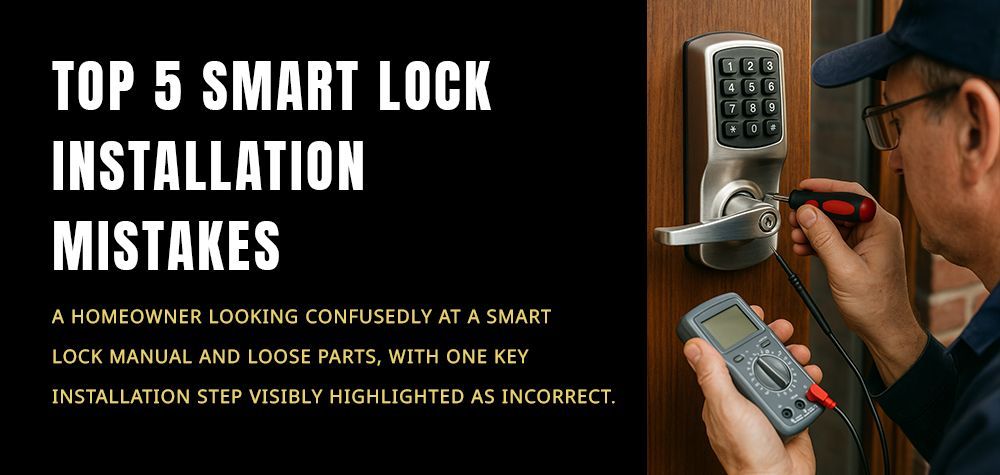Door Locks: The Definitive Guide 2022
The door lock is a necessary mechanism to ensure peace and serenity in your home. It protects you from intrusion attempts or attempted burglaries.
When your door does not close or open, it is possible that simple maintenance will allow you to unlock it.
Certain more complex cases of wear and tear of the mechanisms will require you to change the lock.
But in cases when you can do something about it, here’s how to unlock a door that is stuck.
6 Not-So-Genius But Highly Effective Ways to Unopen a Stuck Lock
1. Sandpaper your door
In summer, your door could be stuck simply because of the heat. It expands the wood, preventing your door from opening and closing normally.
If the doorframe is also made of wood, it may be the latter that has swelled. If the door rubs on the floor, raise it on its hinges and place sandpaper in order to sand the wood under the door.
If it has swollen on the sides, unbolt it to plane it more easily. Take the marks of the surface you want to plane, so as not to exceed it.
Do not change the lock if the problem is with the door, at the risk of encountering the same problems with the new model.
2. Release the lock
If possible, open your door to see if the lock is working properly. If so, the problem is probably with the door, or with the bolt being pushed in. If it turns difficult even without being blocked against the door, the problem is then a fault in the mechanism or the age of your equipment.
In this case, apply penetrating oil, or a little oil, to the mechanisms and wait a few minutes.
If your key does not fit correctly, apply non-greasy lubricant to the lock again, to facilitate the sliding of the parts.
3. Use a pencil
Or you can use powdered graphite. Generally marketed as a spray, graphite is nothing other than the component of a pencil lead.
You just have to rub the lead of a wooden pencil against the key and insert it into the lock several times. Your lock should work again. By repeating this operation twice a year with all the locks in your home, it will save you a lot of problems and ensure the longevity of all your locks.
4. Replace the cylinder
If you see that, despite everything, the lock remains stuck, then you should consider replacing it. Simply replace the cylinder so that everything is in order.
To do this, unscrew the screws on the handle, insert the key and turn in both directions, gently pulling the cylinder towards you. Remove it and replace it with a new one. This is easily done. But if you prefer, you can always call on a professional to help.
5. If frozen, unfreeze the lock
Are you facing a frozen lock? Get a lighter and heat the key with the flame. Insert it into the lock so that the heat will overcome the frost.
Sometimes it is necessary to start over several times before you can unlock the door, but this solution should work very well. In addition, it is not enough to release the lock. It is necessary to think of protecting it against a possible blockage due to frost.
Rest assured, the solution is elementary. Apply a dab of glycerin or petroleum jelly on your finger, then rub your key along its entire length. Do the same at the gap in your lock. Insert the key and turn it in both directions. Remove the key and reinsert it into the lock. You will find that the harshest winters will not succeed in blocking your access.
Regarding multi-point locks, it is essential to vacuum regularly at the level of the striker on the ground. When the dust is removed, you can try to open and then close the access with the key.
As for jamming caused by paint, you just have to scrape the paint.
6. Contact a locksmith
If you find that your lock is stuck and that by inserting your key in the cylinder, it is impossible for you to turn it, still do not insist on the risk of making the problem worse and breaking the key in the lock.
If you proceed alone could damage your installation or you could injure yourself. It is possible that your lock is simply misaligned with the bolt housing. In this case, your lock or doorframe may be sagging.
It is then necessary to consider calling a locksmith to know the origin of the problem. If they show up in the middle of the day, you’ll get the normal rates but if there is an emergency, and they come in the middle of the night, on weekends, or on a public holiday, the rates will be increased.
How to Prevent Your Door Lock From Getting Stuck in Future
Get into the habit of closing your door gently and opening it just as carefully. Remember to systematically remove the key if you are often the victim of a door slamming. It is then possible for you to unlock your door and gain access while damaging nothing.
Label your keys to make them easier to differentiate. This will prevent you from having to make several unsuccessful attempts before you find the right one.
On the one hand, you will save time and on the other hand, you will make sure that small errors do not lead to a total blockage of your door or gate.
Repairing the Lock When You’re Done Unstucking It
In the case of repairing a car door lock stuck in the closed position, solutions will almost always focus on repairing the broken fittings. If you are using glue, having the right binder for the materials you are gluing is essential. For example, plastic and metal will need a different glue, and a different glue will be needed to bond plastic to metal.
You can also use all kinds of manufacturing methods like fabric tourniquets, screws, etc. This is all very complicated if you do not understand how the locks are assembled, let alone if you do not have the training to repair them. It is a good idea to contact a locksmith for assistance with issues of repairing a door lock that is stuck in the locked position.

Step-by-step guide to replacing cylinder
Unblock the lock
To turn the lock again, you will have to break the 4 pins that hold the cylinder inside the lock. For it :
- With a punch, hit the lock just below the rotor so that the drill bit does not slip.
- With a 4 or 5 mm metal bit, drill the cylinder where you put a punch.
- After 4 bursts (each jump corresponds to a pin that gives way), stop drilling.
- Through the drilled hole, suck the filings with a vacuum cleaner in order to free the rotor.
- Insert a flat screwdriver into the slot of the lock and try to turn the rotor until you manage to open the door.
Remove the broken cylinder
Proceed as follows:
- Unscrew the screws holding the handle.
- Remove the handle.
- Unscrew the locking screw holding the cylinder to the side of the door.
- Rotate the rotor with the flat screwdriver from right to left, gently pulling the cylinder towards you until it comes out of its housing.
Position the new cylinder
When the new cylinder is in your possession, all you have to do is reposition it in place of the old one:
- Insert the key into the new cylinder.
- Turn the key from right to left until the key bit is in line with the cylinder.
- Gently push the cylinder into its location by turning the key.
- Screw the locking screw on the side edge of the door.
- Refit the handle on both sides of the door, remembering to replace the fixing screws.
If you need a locksmith to help you with this, call us and we’ll be there to help you out.
Call Us Any Time!







